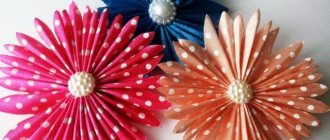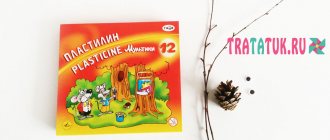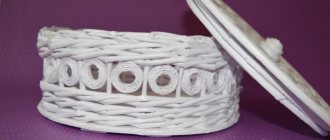An original solution for the creative ideas of wood craftsmen is to create decor or souvenir products using birch burl or souvel. These materials differ from other wood in the uniqueness of their cut pattern.
A birch burl is a growth on a tree, from which thin tree branches protrude, with buds formed on them. It has a very high density, even higher than that of the tree trunk itself. The pattern on the cut of the burl is original and unique. Tree growth rings are intertwined with dotted inclusions and create a unique pattern.
Processing birch burl with your own hands is not easy due to the high hardness of the material. After processing, the product resembles malachite and is cast with mother-of-pearl. The color of the pattern is milky with black and brown shades.
Suvel grows on a tree due to its disease or damage and grows much faster than burl. This material is softer and more pliable than burl in processing. It has unique patterns reminiscent of marble, which are formed due to its position on the tree.
Wood suvel
Suvel is a growth on a birch or other deciduous tree that forms two or three times faster than the tree grows. It is most often provoked by a disease called wood cancer. The reason for its appearance has not yet been fully studied.
People call these formations woody bone. This name comes from the image on the cut, which repeats the patterns of marble, and in thin places resembles bone.
Often, ordinary people confuse burl or suvel with other formations. Most of all, caps are confused with chaga. The difference between chaga and burl on a birch is that chaga is not a growth, but a mushroom that grows on the trunk after its spores get into the damaged bark. Chaga can be cut from a tree using any available means, but the burl will be difficult to cut down even with an ax due to its high density.
Processing burl and suvel is a pleasure for woodworkers, although it is not an easy task. The burl is particularly difficult to process, but the patterns that are revealed when the material is polished are surprising in their uniqueness and variety.
Burl and suvel of birch are ideal for creating decorative products. Thanks to their original texture, there is no need to create carved patterns. Therefore, they are used to make integral crafts and decorations - everything that looks great in a polished state.
Suvel
Suvel (svil) - as the name implies, the growth was named because of its structure. "Twisted Structure"
In the Vatican there is a font much more than a meter in diameter, carved from a single piece of suveli. I myself was once sitting in a chair carved from suveli. It holds fine threads perfectly, but cutting suvel is not recommended. It is better to sand and varnish (impregnate with oil). The product will only benefit from this.
The most valuable is the root or butt fork. The presence of dark veins and clearly defined twisted annual rings. This is a fairytale. BEAUTIFUL, that says it all. Barrel suvel has a finer texture and a more subtle “frosty” pattern. And lighter wood. In terms of strength, butt suvel is slightly superior to trunk suvel due to the structure of the tree trunk. Suvel is durable, beautiful, easy to polish and grind. Well-dried and treated, it begins to “glow” from the inside (with proper impregnation with oils, the wood becomes like amber and even a little transparent). Usually has a color from soft yellow or pinkish brown to completely ocher brown. It all depends on the conditions and drying time. The cap has the same colors.
As you can see, suvel is completely different from burl.
Chaga is a mushroom (not to be confused with the tinder fungus) and we do not need it for our purposes.
Texture
Burl and suvel of birch differ in their texture from any other wood. The unique patterns on the cut can be explained by the formation process.
Burl grows on birch for various reasons:
- A bud begins to emerge under the bark, but due to the hardness of the bark it cannot break through. Nutrients are supplied to the kidney, due to which adventitious buds are formed. Their development and inability to break through form a growth on the tree.
- Mechanical damage caused by humans, animals, insects or natural phenomena can also cause the normal development of the kidney to stop. But it strives for life, despite its deformation, and forms a new growth on the trunk.
- At the site where the bud appears, the tree devotes all its energy to the development of burl due to bacteria, fungi or late spring frosts.
Understanding the pattern of burl formation, which grows very slowly, but becomes larger over the years, we can assume that the pattern created by the growth of wood and adventitious buds will be truly unique. Burls grown on trunks have a more ornate and pronounced structure than those grown at the roots.
The growth rings are twisted and intertwined with the cores of the shoots. The pattern on the cut is not immediately visible. It only appears after the wood has been processed by sanding, polishing and toning. After processing, burl products have different shades and are cast with mother-of-pearl. The patterns resemble malachite.
Suvel has a structure that is different from burl, but unique and exquisite in its own way. The image on the cut of suvel resembles waves, stripes, spots or bends. This pattern is obtained due to the uneven formation of wood rings, due to tree disease or mechanical damage.
The smooth and soft surface of suvel is easier to process. Finished products made from this material amaze with their shine and variety of patterns, reminiscent of the surface of marble.
DIY burl crafts. Products from burl (suvel). Burl products
Material
, which has long been known in Russia as wood bone.
This is a growth, see photo 1
, (or influx, as it is also called) on Birch, which forms on a tree trunk for various reasons. For example, weather conditions, environmental climatic influences. Also, this effect can be achieved artificially by wrapping the trunk, for example, with wire; over time it will become overgrown with Suvelya. It was called bone due to the fact that after careful polishing and impregnation with various oils, the wood takes on a bone-like appearance, and its thin parts can be seen through.
Photo 1.
View of Suveli after cutting.
It looks like a bump or swelling. Initially, it is difficult to judge the internal appearance of wood after cutting it. In most cases, with proper cutting, you can observe amazing phenomena, namely the interweaving of wood fibers that form pearlescent areas of different (unique) patterns and directions, which literally glow, reflecting daylight. Patterns and colors can be different, mostly pink-yellow, straw, or brownish-yellow with a deep pearlescent glow on the cut; in some cases, there are specimens with a dark brown color with the presence of swamp-green shades. This color range is explained by the fact that the wood grows in different conditions and areas, for example: If the growth was cut down in a very swampy area, then it is possible that the color of the wood will most likely be brownish-green. Or another example: If Suvel is located on the butt part of a tree (the butt part of the trunk is the part that is 10 - 15 cm underground and 15 - 20 cm above it, this is on average) and it is covered with moss, then most likely it it will be dark brown with the presence of a pale pink tint, or straw yellow - golden with dark brown growth rings - that is, the presence of dark shades will dominate, but not always.
Photo 2.
A rare and valuable specimen of Suveli, naturally dried for about 1.5 years.
In the photo you can see the ray glow of the fibers in daylight. This glow is called “Mother of Pearl”, it can be of different types, from clear pearlescent rays to those that you see in other images, there is no limit to the variety. Photo 3
.
This sample is also rare, its main difference from the one in photo 2 is the marble texture and drying technology, it was dried in a quick way, namely by boiling in a salty solution.
The photo clearly shows how it differs from the one in photo 2
, the one above has a total straw or golden color, and in
photo 3
the color is predominantly brownish pink.
Photo 4.
Here you see a species that is also rare, but is more common than those in photos 2 and 3.
Photo 5.
In this photo, mother-of-pearl stains are called ashy or glass. This type is the most common, but its value is not lost because everyone has different tastes. Some people like the radial section, while others like luminous ashy stains.
Photo 6
.
This, as we already understood, is the radial direction of the fibers with the presence of ashy stains. (mixed type)
Photo 7
. A specimen that looks like a simple one, but in fact it is not, it is also a rare species that grows mainly in swamps, which is why it has such a color.
Photo 8
. This is an example of how Suvel looks in finished form (product) in combination with reindeer antler and metals. Knife by Valery Sokolov “Svalbard”, made in Scandinavian style.
Also, the general appearance of this wood depends on the type of drying (this does not affect the quality of the products); there are several drying options. 1. Natural, this is when the wood has dried under natural conditions, without human intervention, that is, after cutting over time, the tree has dried out on its own. 2. The old Russian method of quick drying, the wood is boiled in a salty solution for several hours, then the bark is removed and placed in a dark and dry place for several weeks, this is the minimum, and after that it is quite suitable for processing. The noticeable difference after these types of drying is the color. During natural drying, the wood remains its natural color, and after cooking it acquires a soft pink or carrot tint, this is not for everyone, whoever wants it dries it the way he wants. In the skillful hands of a person who has everything in order with imagination, any piece of wood will shine and look expensive, you just have to really want it and use your imagination.
Suvel is a material from which you can make various objects, for example, women's jewelry in the form of pendants, earrings, hairpins and bracelets, it depends on how much imagination a person has. Previously, but no, not only earlier and now some enthusiasts use it to make cutlery that is quite suitable for its intended purpose, take for example the Scandinavian “Kuksy”, this is something like our mugs, only made of wood, a better material than Suvel Can't find one for this. But most importantly, this material is most suitable for making knife handles. Due to its inherent qualities, such as hardness, density, ease of processing and polishing, unique texture, variety of color shades, beauty of mother-of-pearl weaves, etc. One thing is clear that this material will never get boring, although some will disagree with me, this is their right. Previously, I made handles only from exotic types of wood, but they quickly tired me with their monotony and uniformity, although to each their own, and someone will say the opposite. But I definitely learned for myself that there is no better raw material than Birch and what it gives us in the form of Burps, Suvels, Svils, Butts and the root part.
All samples that you see in the form of bars are ground and polished, and then treated with shelf oil. This allows you to preserve the natural color of the wood and protect it from moisture and decay + treated with carnauba wax.
The variety of Suveli is very rich, I would say endless, this material is combined with almost all types of wood, bone, metals, etc.
Cap, suvel. Harvesting, drying, properties.
The author of this material is a great specialist in the artistic processing of wood (and not only wood), already familiar to us from Sergei from the Moscow region. Today Sergey will reveal to readers the secret of quick drying of such rare and interesting materials as burl and suvel. The information is very rare and useful. Reading...
So first, let's define some concepts. KAP - (aka witch's broom) is a benign formation on a tree, which is a bunch of thin branches growing from a teardrop-shaped (most often) growth. When viewed cross-section, it has a texture with pronounced knot cores. It is difficult to process due to its highly curled texture and a huge number of knots. Extremely beautiful, durable, perfectly sanded and polished. Numerous individual areas have a pearlescent tint. It has no great industrial significance, but is highly valued because of its beauty. If it is used in industry, it is only in the form of veneer for finishing furniture (burls from exotic tree species are mainly used), as well as the production of small products such as boxes, cigarette cases, women's hairpins, and small jewelry (birch burls). Used on knife handles is considered good taste and is also valued by wood carvers for its unique texture. It is impossible to find two identical pieces of burl; even the halves of a sawn burl have different patterns, the build-up is so heterogeneous. It grows on many trees (linden, alder, birch, maple, oak, etc.), but the most valuable and beautiful is birch (of those growing in our latitudes). The growth is usually small, maximum the size of a volleyball ball or the size of a large plate. There is no point in cutting any pattern on the burl, since the texture clogs everything up. The photo shows a birch burl. Unfortunately, I couldn’t get a cut of a birch burl (I took these pictures near my native police station and, as you understand, they wouldn’t let me cut anything down there... But I contrived and found an ash burl; most of the burls are similar in texture and differ only in color and the size of the knots' cores.
SUVEL - (aka svil) As is clear from the name, the growth got its name because of its structure (twisted structure, that’s putting it mildly). Suvel is a drop-shaped or spherical growth on a tree (there is also a ring variety that covers the tree trunk around the perimeter), usually grows 2-3 times faster than the tree itself. When cut, it has a texture similar in pattern to marble and mother-of-pearl (this is the main sign of difference from KAPA; in the future, do not confuse suvel and burl). The presence of mother-of-pearl stains on polished wood creates a beautiful shimmering picture that glows from within. Svil is also poorly processed, like burl, but not as hard. The size varies from a nut to 1.5 meters in height (I myself saw one on a birch) and up to 2 meters in diameter (a ring-shaped suvel that completely covered the tree trunk). In the Vatican there is a font much more than a meter in diameter, carved from a single piece of suveli. I myself was once sitting in a chair carved from suveli. It holds fine threads perfectly, but cutting suvel is not recommended. It is better to sand and varnish (impregnate with oil). The product will only benefit from this. The most valuable is the root or butt fork. The presence of dark veins and clearly defined twisted annual rings. This is a fairytale. BEAUTIFUL, that says it all. Barrel suvel has a finer texture and a more subtle “frosty” pattern. And lighter wood. In terms of strength, butt suvel is slightly superior to trunk suvel due to the structure of the tree trunk. Suvel is durable, beautiful, easy to polish and grind. Well-dried and treated, it begins to “glow” from the inside (with proper impregnation with oils, the wood becomes like amber and even a little transparent). Usually has a color from soft yellow to pinkish-brown to completely ocher-brown. It all depends on the conditions and drying time. The cap has the same colors. Photos:
As you can see, the cap is completely different from suvel.
CHAGA is a mushroom (not to be confused with the tinder fungus!!!) and we do not need it for our purposes.
So, how to dry it. I’ll say right away that the “steaming” method is suitable for small pieces of wood. About half the size of a football or a small log.
1. We cut off the growth. We do this with a sharp saw. Otherwise, you will get tired of sawing, and the tree will begin to become shaggy. We do not peel off the bark. Don't forget to cover the cut on the wood with oil paint or wax or something similar.
IT IS PREFERABLE TO CUTT OUT THE GROWTH DURING THE DRY TIME OF THE YEAR, IDEAL AT THE END OF AUGUST, THE BEGINNING OF SEPTEMBER, BEFORE THE COMMONATION STARTS.
2. Take an unnecessary pan (bucket) and throw a piece of wood there. The pan is unnecessary, since during the cooking process a very tricky broth is formed which is then very troublesome to wash off. It is better to clean the wood of any rags of birch bark and other fragile and dangling pieces. they will still fall off. I consider birch growth as the most accessible and beautiful; the rest of the growths are cooked using the same technology. The log is accordingly cleaned of any debris and fragile particles. Pour water. It is convenient to do this with a faceted glass (it contains 250 ml). The water should cover the piece of wood by about a centimeter or two. The tree naturally floats up, but let’s press it to the bottom and we’ll see everything. It doesn’t matter what kind of water you pour, cold or hot, it will still boil. You can throw a piece of wood into a saucepan as much as you like; what is important is the volume of an individual piece of wood and not the total volume of wood.
3. Take table salt, whatever you don’t mind. We're not making soup. For a liter of water, pour 2 large tablespoons of salt (who will count glasses of water??? Eh?). You can do more, as much as you like, it’s okay, it’s impossible to overdo it. The main thing is that the water is sickly salty. You can use clean sea water (precisely clean, otherwise it will smell disgusting of mud). The salt will draw sap from the tree, but will not saturate the tree.
4. Find sawdust of resinous wood. Spruce and pine are the easiest to get. Take a saw and go ahead. We need two powerful handfuls of sawdust (raking the sawdust with both hands). Precisely sawdust, not shavings from a simple hand plane. The shavings will come from an electric planer (you can get them at the nearest sawmill or plan them yourself). I always use them. They are quite small and are usually plentiful and easy to obtain. The more resin in the sawdust, the better. And the finer the sawdust, the better. Pour into a saucepan. You could have taken a bigger saucepan! Sawdust will give the suveli a pleasant ocher color. From soft pink-yellow to ocher-brown. Resins will also add strength to the wood and reveal texture.
5. When the water boils, reduce the heat and leave it simmering for 6-8 hours, longer if you have the patience. If the saucepan is large, then you don’t have to turn down the flame, let the water boil and bubble. But you need to watch so that the water does not boil away completely. Salt, sawdust, temperature and time will do their job. Add water as needed. During the cooking process, a red “broth” is formed. And scale. It is better to remove scale immediately. It is very difficult to wash off.
6. 6-8 hours have passed (depending on the size of the piece of wood). We take out the piece of wood. We rinse under running water to remove sawdust. We dump the water from the pan as unnecessary, but you can leave it for next time if you have somewhere to store it. But it's easier to pour out the water. We throw the growth onto the cabinet, wrapping it in nothing. Let it cool for a day or two.
7 We repeat the cooking and drying process 2-4 times depending on the volume of the wood. To speed up the process, you can use a pressure cooker. The time is reduced to 4-6 hours.
8. During the last cooking, you need to quickly peel off the bark while the tree is hot. Although she herself should fall off by this time. Carefully!!! Hot!!! use gloves!
9. We throw it on the closet for a week or two. The tree is basically already dry, but let the remaining moisture go away. The tree will “get used” to the atmosphere. After final drying, the wood will become bone-like and can be cut, sawed, or sanded. There will be no foreign smell. It will only smell like wood.
10. In the process of accelerated drying of wood, it must be remembered that small cracks may appear, and therefore it is necessary to allow allowance for their removal in subsequent processing.
11. Where to look for growths... Naturally in the forest. BUT! There are no specific places of growth, they grow spontaneously, and the biggest and most beautiful growths will be found by the most big-eyed and persistent. This activity is akin to mushroom hunting; whoever ran around the forest further and further got more. Look like that's it. I remind you once again that large pieces cannot be dried like this. Cracked. Necessarily. Verified.
12. After the wood has finally gotten used to the atmosphere, you can start working with the workpiece. It is advisable to soak the suvel and cap with oil, and if desired, with wax too. The wood will reveal its texture, it will “play,” as they say, and all its inner beauty will appear.
If you have any questions or any clarifications about the technology described above, I will answer to the best of my ability.
I’ll end with this, your Serjant.
Growths on trees have been used to make household utensils since time immemorial. Folk craftsmen valued and value them for the natural beauty of texture and strength. The famous historian N.I. Kostomarov wrote: “Both food utensils - bowls, torels, salt pans, and drinking vessels - bratins, ladles, korets were made of wood in different places throughout the villages and were sold in markets... These wooden products were decorated with carvings, which has long been a favorite decoration of things for the poor class. The nobles did not disdain wooden utensils, and burl vessels were used by the boyars and even the tsars and were considered a luxury.” Traditional fishing does not lose its importance today. He is especially revered by the northern peoples, in particular by the craftsmen of the Komi Republic. In Syktyvkar in 1993, the Union of Masters of Traditional Folk Crafts and Arts was formed. It brought together professional artists and masters of decorative and applied arts, who are fluent in the techniques of artistic processing of wood, burl and birch bark, bone, stone, leather and fur. How does wood in the form of a growth turn into an elegant product? The editors addressed this question to a professional woodcarver, member of the Union of Craftsmen of the Komi Republic, Vasily Vasilyevich POPOV (Syktyvkar).
A growth is a sharp thickening of wood on a tree trunk, its branches or roots. It consists of incorrectly located, as if tangled, fibers. Wood with such a defect is said to be twisted. It is difficult to process with an ax and a plane. But it has its advantages: increased resistance to splitting and a unique, bizarre texture.
Most often, growths form when a tree receives trauma of a mechanical or biological origin.
There are more valuable growths, such as burl, with an exquisite, original texture, and less valuable ones - svil - their fiber pattern is poorer than that of burl.
The technology for making products from burl and fiber is quite labor-intensive and requires perseverance. When deciding the composition of the future product, the carver determines what the main tone should be. Depending on this, the type and color of wood is selected. Each type of wood has many shades.
To depict an animal, an animal carver must know its habits, movements, anatomy well, must be able to sketch the characteristic poses of this animal and then choose the most accurate and expressive one.
When the goal is clear, the work progresses.
It is better to remove the growth with part of the stem wood. It is better to do this at logging sites.
The freshly cut growth is first cleared of bark, then hollowed out with semicircular chisels and cranberries. In the places where the growth transitions to the trunk, handles are cut out in the form of the head and tail of a bird, or a sculpture of an animal, or an entire composition. But all this must be linked with the bowl or box into a single whole. Then the artistic product will have clear, complete forms and have dynamic movement.
When the workpiece has dried, it is finally processed: the walls of the vessel are made thinner, the lines are brought to perfection.
To better reveal the texture of the wood and highlight the beauty of the material, a good finish is required. Sanding is carried out first with coarse, then medium and finally the finest sandpaper (or cloth). Internal cavities are ground with a “fungus” type device, external cavities are ground with a similar “fungus”, but flat, roughly. Shaped parts - a shaped bar that has a counter-profile of the part. The bottom of such a shaped block, like the bottom of the “fungus”, is covered with sandpaper. The final grinding at this stage is carried out with a piece of porous rubber.
Then the product is dipped in water to raise the pile, dried and sanded again with fine sandpaper.
The next process is tinting with stain. The depth of tone is made such that in no case does it destroy the texture pattern. The color of the stain is selected from a piece of wood of a similar shade and density or from waste from this product.
After drying, the product is lightly sanded with sandpaper, the finest grain.
The last process is waxing. The product is rubbed with a cloth moistened with natural drying oil or vegetable oil. Excess drying oil is wiped off with a dry cloth. Then the product is dried for at least a day. This operation is repeated several times until a soft matte shine appears.
It may seem that everything is quite simple, but it has its own little secrets. To become a professional carver, you need to have a delicate taste, a sense of dynamics, plasticity of form and great patience. If you have all this, then you probably won’t spoil what nature has been growing for decades.
The artistic products from burl and svil, presented in the illustrations, were made by professional woodcarvers from the Union of Masters of Traditional Folk Crafts and Arts and Crafts of the Komi Republic.
We make exclusive burl boxes with our own hands.
In May and June, work was carried out in Moscow to improve green spaces. Near my entrance there was a maple tree covered in burls. I was lucky that I caught him being cut down and took a piece of the trunk with four large burls. I spent the whole day drilling and cutting them off from the trunk. After that, I boiled each growth with salt for about 4 hours to replace the juice with brine. Then he dried the mouthguards wrapped in newspapers in plastic bags, changing them every day. This lasted about a month. Photo of the burls after drying.
The central parts of the growths were more massive and cut out.
And another one in the same spirit.
There were six boxes in total.
I will especially say about the coating of products. Natural linseed oil was used.
Only linseed oil is used for the mouth guard. Impregnation continues until the oil stops being absorbed. In my case it was covered 7-8 times. The oil reveals the structure, gives shine and preservation to the product.
Burl is a growth on trees of different sizes (from small, the size of a match head to giant ones, weighing more than one ton), appearing in places where adventitious buds “sit” close to each other and in areas of abundant development of tree shoots. Burl wood has high strength, density (830-950 kg/m3), practically does not burn, and does not dry out. Due to these properties, the material has not found any industrial application.
The texture of the burl is varied due to different growth conditions of trees - the amount of light, air humidity, even the location (plain or hillock) affects the pattern. It is precisely because of this unique texture (somewhat similar to the pattern of Karelian birch) with a complex interweaving of annual layers and interspersed dormant buds that burls are in demand by master carvers.
The pattern of each burl with a chaotic interweaving of fibers and a scattering of black dots is unique - it is impossible to find two identical sections. The carving styles of the masters and their secrets in processing this rebellious material make the figurative works exclusive. Even with all the desire, the master will not be able to cut out a similar piece of work one after another - the wood fibers, intertwined differently in different pieces of burl, simply will not allow this to be done.
Suvel is the twin brother of burl with a pronounced stripe-like texture. On trees, suvel is more common than burl. It is almost impossible to distinguish one from the other before processing, but during the production of works, the burl reveals itself as hemispherical tubercles - dormant buds - which are absent in the texture of suvel.
They extract burl (suvel) not by mindlessly felling the forest, but by carefully cutting off the growths that draw the juices out of the tree. The resulting wounds are treated with paraffin, clay, oil paint or lime, so that harmful microorganisms do not enter the tree and it does not die.
.
Craftsmen engaged in the artistic processing of burl (suvel) cut small figures on average 2-3 days, but sand them by hand for at least a month - first to give smoothness with various abrasives and only after even the thinnest fabric does not cling to the work, they finish sanding with cloth. As a result of such meticulous processing, the wood becomes extremely smooth and warm to the touch.
Blank
In nature, suvel is found much more often than kapa. Trees with such lesions can be found in deciduous or mixed forests located in both dry and swampy areas. It must be taken into account that cutting a suvel or burl on a growing birch tree can lead to its death. Therefore, after cutting down the material, it is necessary to cover the living layer with varnish.
On dead trees, the formations are already affected by rot and are not suitable for production. Therefore, finding a suitable material for the workpiece is not easy. It is better to do this in mid-autumn.
It is impossible to determine by the type of formation what it will be like in the cut. But the more crooked and tortuous the suvel and the more twigs on the burl, the more saturated the pattern will presumably be. Working with such material is more difficult, but more interesting.
It is quite difficult to cut down suvel and burl, the chains become dull quickly, so good sharpening of the tool is necessary. You can cut it with a hacksaw or bow saw, but this will require a lot of physical effort.
Birch suvel has a different texture when cut. It can be pronounced or completely invisible. Suvel with a texture that is difficult to see usually has higher strength. But you will never guess by the appearance of the growth that there is a cavity or a beautiful ornate bend in it.
What is it and how does it differ from suvel?
A burl is a kind of growth on a birch tree; it usually has a round shape. People often call the cap a “witch’s broom,” and the word itself came to us from Old Slavonic speech, where the word “cap” was translated as “head.”
This formation is covered with bark, sometimes small branches with buds can sprout from it. Burl has an incredibly high density (specific gravity), which is always greater than that of the birch itself.
Sizes can also vary: there are both very small growths and giant formations up to 350 kg (downy birch).
Birch burl is a unique phenomenon, and it is highly valued among craftsmen. If you cut the growth, an incredibly beautiful texture will become visible, consisting of large concentric circles and small dark dots. No two identical formations can be found in nature, so each burl is special. At the same time, burls growing on trunks will be more attractive than those growing at the roots. After processing, they take on the appearance of malachite and shine beautifully.
As for suvel, this is also a formation on a tree, and it is often confused with burl. It is worth considering how these growths differ.
Drying
To ensure that the workpiece does not delaminate or collapse while drying naturally, it is necessary to dry it gradually. There are several ways to dry suvel or birch burl at home.
Here are the two most popular ones:
- Boiling in water with table salt. This method is suitable for small pieces of birch. The workpiece is cleaned of all unnecessary growths, rags and dirt and placed in water, which should be 2 cm higher. Per 1 liter. You need 2 tbsp of water. salt. Then, resinous sawdust must be added to the water, which will ultimately give the product an ocher tint. It is necessary to boil for 6-8 hours, then carefully remove and rinse the workpiece under running water. After two days, the cooking procedure must be repeated, but reduce the boiling time by a couple of hours. After two days, the boiling process must be repeated, if necessary, reducing the time by another couple of hours. After this, remove from the boiling water and peel off the remaining bark on the hot workpiece. After 2-3 weeks the material is ready for processing. This method is only suitable for small workpieces!
- Larger pieces take longer to dry. Under no circumstances should you bring the workpiece into a dry room when drying at home. Prepared cuts need to be coated with paint or drying oil. If dried properly, they dry within 2-3 months. The temperature should be about 10-15 degrees. Then they can be removed indoors, where they will dry completely and be ready for processing in about six months.
Making a box from alder and burl
1) To make the lid, take one of the boards and mark on it with a pencil the recesses for the wooden inserts. The notches can have different shapes, it all depends on your imagination.
2) To secure the workpiece, we will use clamps and scraps of boards. Using a router, hacksaw and knife, we select excess wood and level the surface with sandpaper and a file for the best gluing.
3) The next step is to make inserts and glue them. To do this, we will saw off a couple of flat boards from the burl and cut out inserts from them and sand them.
Apply glue to the inserts and clamp the lid with clamps.
At the same time, in order to avoid possible dents and scratches, small spacers should be placed on both sides between the clamp and the cover.
4) Next, let’s make the base of the box itself. To do this, on the second board we draw out the walls of the box with a thickness of 8 mm and remove the excess wood with a router (straight or rounded cutter). Leave the bottom 5 mm thick. Use coarse sandpaper to finally level the bottom and round the inner edges. 5) In order for the box to be closed, we will make a protrusion in its lid. Using a hacksaw, we obtain cuts of the same depth (3-6 mm). Use a chisel and file to remove excess.
6) Sand the box with coarse sandpaper, removing the protruding parts of the inserts. At the grinding stage, special attention should be paid to the burl, because its structure can only open with high-quality and long-term grinding.
7) When the product is completely sanded, it can be coated with any varnish, oil or special wood coating.
It takes very little time to make this box. It has a simple design and therefore can serve you for many years. Such a unique handmade item will be an excellent gift for anyone for different occasions.
Alexey Maksimovich Fedotov, St. Petersburg.
Source:
Treatment
Processing birch burls with your own hands is a creative and interesting activity for any specialist who is interested in woodworking. Not everyone can dry birch burl at home. To do this, you need to practice on less valuable wood.
It is necessary to take into account that the preparation for deep dishes from suvel or burl is done even before drying. That is, the required recess is cut out and given a pre-designed shape. Then the workpiece is dried, after six months it can be taken out and refined to perfection.
Processing Features
Making a birch burl is not very difficult. Here are some rules for preparing material.
After you have taken out and brought home the mouth guard, it needs to be processed. To do this, the whole fragment must be cut into blanks. Their size and thickness are determined based on the parameters of the future product. It is worth noting that sawing a burl is not an easy procedure, since at first it will be difficult for a beginner to reveal all the beauty hidden in the material. Experts recommend sawing so that as many dormant buds as possible are dissected.
In addition, novice craftsmen may be confused by the pale and inexpressive design that appears to their eyes when sawing. However, you should not be scared - in the case of a mouth guard, this is a completely ordinary situation.
In order for the wood texture to be filled with life and sparkle with new colors, it will need to go through 2 more stages of processing: steaming and drying. Both stages are inseparable from each other.
Application of mouthguard and suvel
Thanks to proper drying, beautiful and unique crafts from birch burl are obtained. The most popular products from burl and suvel are dishes made by craftsmen, wooden jewelry, various figurines, stands, boxes, souvenir jewelry, earrings, bracelets, etc.
Such products smell like wood for a very long time and do not lose their appearance, even with prolonged use. Only a true artist and master of his craft can create a real work of art from a simple piece of wood!
What is birch burl and how to process it?
Wood has always been considered one of the most popular natural materials. Without it, it would be difficult to build houses, make furniture, and water vehicles. And, of course, you can’t do without wood when making crafts and small beautiful things. When creating a piece of art, craftsmen use different parts of wood, but the burl is always of particular interest. In this article we will look at what birch burls are, and also talk about where they can be found and how to prepare them correctly.
Burl processing (G. Fedotov)
On the trunks of birch trees, high above the ground or at the very root, you can sometimes find spherical woody growths covered with brown rough bark. These are mouth guards.
The beauty of birch burl wood was not immediately revealed to man. At first, he only appreciated its extraordinary strength. A small burl with a piece of trunk and a hollowed-out cavity was transformed in the hands of a craftsman into a durable and convenient ladle or ladle. A bowl or brother was hollowed out of a larger burl. But in such products the peculiar burl pattern remained undisclosed. The wood was subjected to only rough processing. Only much later, when they learned how to saw burl into thin slices and polish it, it began to be valued as an excellent decorative material. At the beginning of the 19th century, Russian cabinetmakers began to use burl along with valuable wood for decorative finishing of furniture. At the same time, the first boxes and snuff boxes made entirely from burl appeared. Some skillfully made items were literally worth their weight in gold. Burls were often combined with other materials—most often they were inlaid with mother-of-pearl, boxwood, and ivory.
Burl products. The box is oval. Auto. N. Skubesho. Casket
The former Vyatka province, now the Kirov region, is considered a recognized center for processing birch burl. Vyatka masters have participated in international exhibitions many times.
Kirov region Product made from burl. Vase 'Wave'. Auto. M. Mertsalova
The craftsmen of the Zvenigorod district of the Moscow region had their own special technology for processing burls. But after the Great Patriotic War, this unique fishery died out.
Relatively recently, the production of burl products arose in Bashkiria, which is famous for its reserves of burl birch. In the spring, as soon as the snow melts, burl harvesters go to the mountain forests of southern Bashkiria. They carefully cut off growths from birch trunks, then thickly lubricate the cut area with paraffin, oil paint or lime so that harmful microbes do not get into the tree, so that it does not wither or die. In a few years, a burl may grow on it again. It has been noticed that burl wood grows two to three times faster than normal birch wood. Lubricate the blanks and cut the burl itself so that it does not crack before processing begins.
1 - radial and 2 - transverse sections of a birch trunk burl
A burl growing on a tree trunk is called a stem burl, while one growing at the root is called a burl. Capo root is found in the forest more often than stem burl, and reaches one and a half meters in diameter. According to their shape, the burls are divided into circular, encircling the trunk, and lateral, growing from the side.
A quick way to dry wood
After we have steamed over the fire for about six to eight hours (6-8 hours), it is necessary to pay attention to some nuances.
- Now we need to take out a piece of wood from everything, or if there are a lot of them, pieces of wood and put it there to dry. Throw away the water if it is no longer needed.
- If everything becomes dry, boil again in the same spirit, but for four to six hours (4-6 hours). I recommend using a pressure cooker. It will be much faster this way.
- Wearing gloves, you need to peel off the bark unless it falls off, which is most likely.
- At this stage we are done with cooking, now we need to take it out and put it somewhere. It will dry out within one or at most two weeks. In terms of callousness and strength, it is not inferior to either bone or stone, and the smell will make it clear that this is wood.
- During this period, cracks may appear. They need to be cleaned and removed by treatment as they arise.
- After all the simple work, you can start making a product, such as a handle.
We hope that the above recommendation suits everyone. If something doesn’t work out, write to us, we will try to help you with any question.
Difference between burl, suveli and chaga
This article will help many people dry high-quality lumber for various hobbies.
Handles, handles for knives, sheaths, forks, spoons, boxes and so on. A drying recommendation will include not only instructions, but also a recommendation.
We are most interested in high-quality, ideal timber for the production of rare items, from the so-called SUVEL (svil) and KAP.
KAP - (formation, witch's broom) on a tree trunk, which is a kind of clot of a growing branch of some growth. The section reveals a bright structure. Due to its unique, specific component, it is very difficult to process. It looks very beautiful, and the quality is durable. It is easy to polish, grind, and process.
Some areas, selectively, have a pearlescent tint. Due to its rarity and sophistication, it is valued very expensively. The cost is higher than some jewelry. In some cases, it is used as lumber for assembling furniture and veneer (in general, burl is used as an exotic type of wood). You can often see it on sale in the form of a box, small jewelry (birch burl), or a women's hairpin.
The handle of a knife is of rare beauty due to its structure and unique texture. All mouthguards are different, you won’t find duplicates anywhere. In size, the maximum reaches a game ball. They don’t cut anything on it, as the texture becomes clogged. To avoid clogging the texture, it is forbidden to cut anything on the mouth guard.











